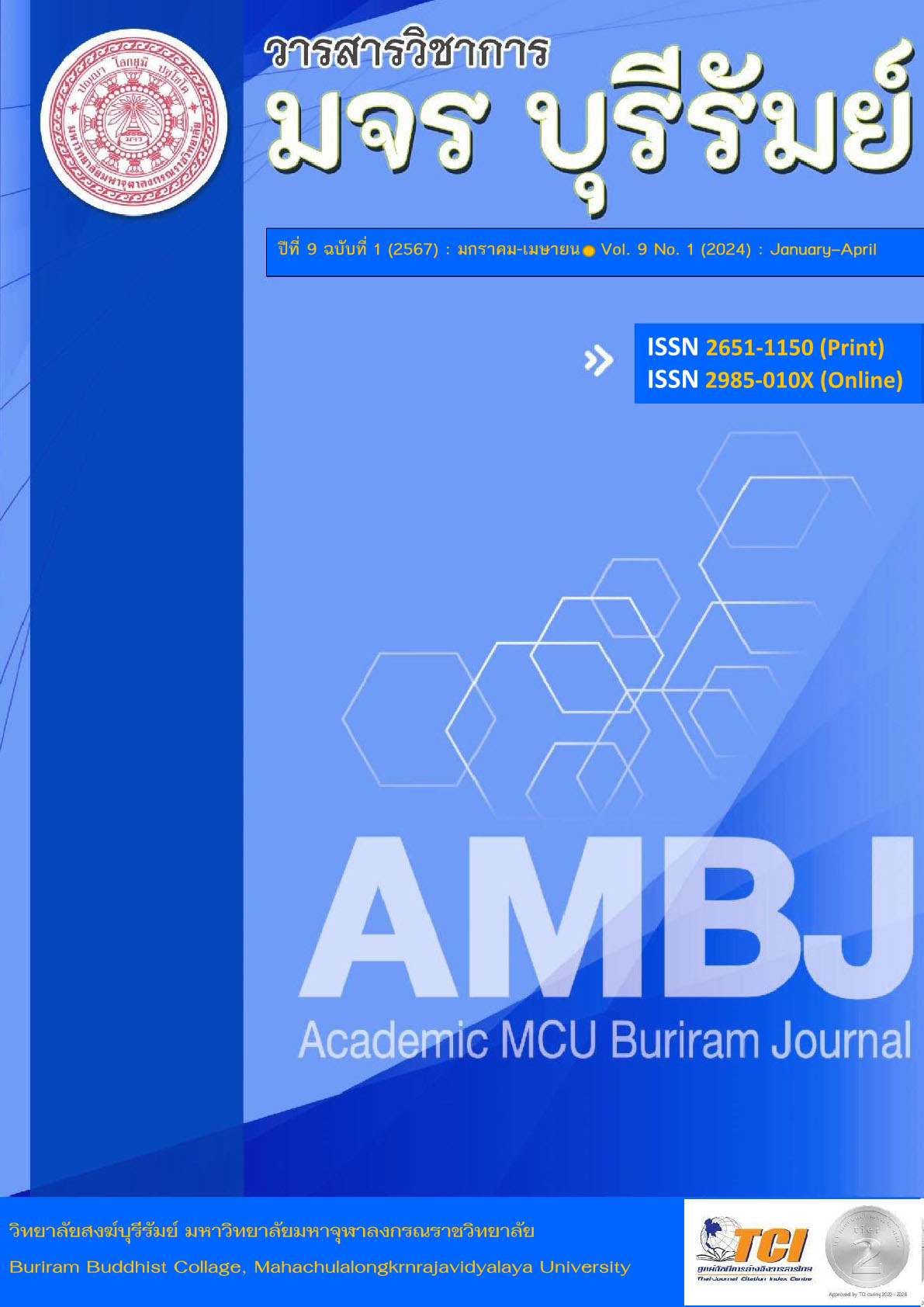Guidelines for Upgrading the Universal Health Coverage Project
Keywords:
Upgrading the Health Insurance System, Universal Health CoverageAbstract
The purpose of this article is to provide recommendations regarding Thailand's universal health coverage policy. By setting quality standards for medical facilities to support the upgrade to 30 baht plus, managing walk-in patients from a single ID card. Most patients want treatment close to home. Ready to set health network standards at the district level and Subdistrict Health Promotion Hospital transferred to the local area The Healthcare Accreditation Institute (Public Organization) or Healthcare Accreditation Institute is an important agency that is responsible for developing standards and accrediting the quality of healthcare facilities voluntarily. When the government policy announces an increase to 30 baht plus, medical facilities will have to modify or raise the level of operations according to the standards of the medical facility, maintaining the system that has been laid out, emphasizing quality and safety for both service providers and service recipients. When there is an upgrade to the gold card and the issue of a single ID card being maintained everywhere. What needs to be changed is the nursing home or hospital. There must be a service system to accommodate walk-in patients. Because previously the number of patients under health insurance rights would be known. who come to receive medical treatment, making it possible to design appropriate services according to the target group.
When people can go anywhere Hospitals must manage by anticipating upcoming situations. and prepare to accommodate new groups of patients who may come for treatment but in reality, it is still seen that according to the potential and location of each hospital Some groups of hospitals may not have a small increase in the number of new patients. Because people may not want to travel far for medical treatment, most may prefer treatment close to home. But the hospital has high potential and is the expectation of the patients. Traveling to major hospitals Even though we're far away It may happen. This creates an opportunity to accept more patients, both in rare disease groups. complicated disease or even diseases that can be treated at general hospitals.
References
ชัญวลี ศรีสุขโข. (2557). 12 ปี ระบบสาธารณสุขไทยภายใต้ระบบหลักประกัน สุขภาพถ้วนหน้า. เข้าถึงได้จาก http://www.hfocus.org/content/2014/10/8495 (สืบค้นเมื่อ 12 มกราคม 2559).
ไทยรัฐออนไลน์. (27 ธันวาคม 2558). นักวิชาการ ค้านโละ 30 บาท รักษาทุกโรค หนุนคนมีเงินร่วมจ่าย. เข้าถึงได้จาก http://www.thairath.co.th/content/554920 (สืบค้นเมื่อ 12 มกราคม 2559).
ณัฏฐ์ฐิติ ด่านวิไล และคณะ. (2562). หลักประกันสุขภาพถ้วนหน้า: แนวคิด เป้าหมาย และความท้าทาย. ปทุมธานี: สำนักพิมพ์มหาวิทยาลัยธรรมศาสตร์.
มติชนออนไลน์. (24 ธันวาคม 2558). บัตรทองจ่อถังแตก!! ใช้งบสูง 16-17% ดันแนวทาง ‘ประชารัฐร่วมจ่าย’ ป้องกันรพ.ล้ม. เข้าถึงได้จาก http://www.matichon. co.th/news_detail.php?newsid=1450943754 (สืบค้น 12 มกราคม 2559).
มติชนออนไลน์. (27 ธันวาคม 2558). รักษาการเลขาธิการ สปสช. ยันเพิ่มงบฯบัตรทองแค่ 5% ของเม็ดเงินทั้งประเทศ. เข้าถึงได้จาก http://www.matichon. co.th/news_detail.php?newsid=1451207288 (สืบค้นเมื่อ 12 มกราคม 2559).
มติชนออนไลน์. (29 ธันวาคม 2558). ปรับปรุง “บัตรทอง” ยังไม่จบ ตั้ง กก.อีกชุด เคาะร่วมจ่ายหลังปีใหม่. เข้าถึงได้จาก http://www.matichon.co.th/news_detail.php?newsid=1451389897 (สืบค้น 12 มกราคม 2559).
มติชนออนไลน์. (9 มกราคม 2559). จับตา...งบบัตรทอง ตรง/ไม่ตรงวัตถุประสงค์. เข้าถึงได้จาก http://www.matichon.co.th/news_detail.php?newsid=1452319546 (สืบค้นเมื่อ 12 มกราคม 2559).
วรัญญู คงศรีสุข. (2560). บนเส้นทางสู่หลักประกันสุขภาพถ้วนหน้า. เข้าถึงได้จาก http:// www.matichon.co.th /news_detail.php?newsid=9743234128 (สืบค้นเมื่อ 12 กันยายน 2560).
สำนักงานหลักประกันสุขภาพแห่งชาติ. (2567). หลักประกันสุขภาพถ้วนหน้า: บทเรียนและแนวทางพัฒนา NHI. กรุงเทพมหานคร: สำนักพิมพ์มูลนิธิสาธารณสุขแห่งชาติ.
Guang–Xu Wang. (2010). Financial Sustainability of Universal Healthcare and Its Reform: The Case of Taiwan. Asian Social Science, 6(4), 3–18.
Marjan J. Faber, Jako S. Burgers, Richard Grol and Gert P. Westert. (2011). Achieving high performance quality in primary healthcare: The Dutch example. International. Journal of Public Health, 3(4), 441–447.
Downloads
Published
How to Cite
Issue
Section
License
Copyright (c) 2024 Academic MCU Buriram Journal

This work is licensed under a Creative Commons Attribution-NonCommercial-NoDerivatives 4.0 International License.
ทัศนะและความคิดเห็นที่ปรากฏในบทความวารสารฉบับนี้ถือเป็นความรับผิดชอบของผู้เขียนบทความนั้น ไม่ถือเป็นทัศนะและความรับผิดชอบของบรรณาธิการ





